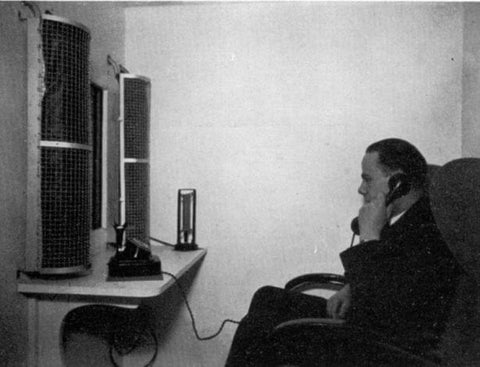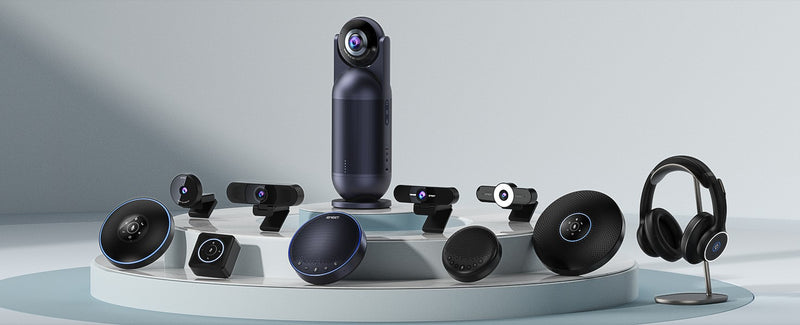With the popularity of video conferencing, video conferencing has also begun to enter thousands of companies and become an essential part of people's lives. In addition to video calls in the conference, the conference camera must record all sounds and images during the meeting. Conference cameras are the most used and most common in video conferences, but there are also many controversies and problems. Many users think video conferencing is a product like a video camera and does not need to be purchased. This thinking delayed the meeting process and caused video conferencing to suffer a certain degree of "acclimatization" in the application. Video conferencing is currently the most popular, widely used, longest-used and fastest-growing information technology means in the world. Video conferencing applications have penetrated various fields of people's lives, especially in education, medical care, transportation and other areas.
History Timeline of Video Conferencing
1870s
Encyclopedia Britannica reports on the first transmission of an image over wire along with audio.
1920s
Two-way audio and video connections enable Bell Labs to connect with officials in Washington, DC, and the AT&T president in NYC.

1930s
Both parties could see each other during AT&T's demonstration of two-way video communication between two Manhattan offices.
1936
The prototype of modern video telephony developed by a German inventor is commercially viable.


1959
Video communication system prototypes were created by Bell Telephone Laboratories.

1969
The company presented Picturephone Mod II, a compact office video communication system. The service cost about $160 per month, plus $0.25 for every minute of conversation over the 30 minutes that were included in the subscription fee.

1990s
A webcam was invented in 1991 by the Computer Science Department at Cambridge University. At one frame per second, it provided a grayscale picture of 129x129 pixels.


2000s
As smartphones became more popular, front-facing cameras were added -- the camera was on the same side as the keyboard -- specifically for video calls.

All images are provided by Trueconf, "A Brief History of Video Conference" by Dmitry Odintsov
2010s
A WhatsApp instant messaging app was founded in 2009 by two ex-Yahoo employees but video chat wasn't added until 2016.
2020s
Numerous Americans were forced to work from home and have their children attend school online because of the COVID-19 lockdown. Consequently, video conferencing tools became very popular among schools and businesses as a way to keep people connected.

Advantage of Video Conferencing
There are multiple companies do not know much about the use of video conferencing. So why is video conferencing more and more favoured by enterprises? What is the real reason?
Streamlines Collaboration
It allows personnel from various departments to communicate and collaborate in a relatively independent space, which can avoid a lot of poor communication. Especially for large teams, video conferencing allows people from various departments to communicate and collaborate more closely. For example, in some large companies, many projects will be in progress, and each department needs to cooperate. In this case, the progress of the project is plodding. And through video conferencing, various departments can have better communication and collaboration, which is why video conferencing has been well-promoted in many cases. Of course, some small and medium-sized businesses can also use video conferencing as their team collaboration tool. At the same time, video conferencing can also help companies reduce costs and improve the overall work cycle of the company. In addition, this method can also reduce the cost increase caused by network factors. Especially in some small and medium-sized enterprises, a series of work costs, such as saving time and expenses through video conferencing, can be well reflected.
Increase Productivity
In the traditional meeting process, there are usually many inconveniences. For example, many people in a meeting listen to a particular person speaking while others are discussing a specific topic. Doing so may lead to heated or unresolved arguments because it is not clear what the other party is talking about. But video conferencing is different. Video conferencing uses a large screen to conduct the meeting process, which avoids the possibility of people watching or not being able to hear what others are saying during communication. This effectively avoids unexpected situations in communication. If a topic needs to be communicated and discussed and it is unclear how to solve it, it can be quickly discussed and determined through video conference. This can avoid not only conflicts during face-to-face communication but also avoid conflicts and contradictions due to significant differences. So you need a certain amount of efficiency when conducting meetings.
Furthermore, the video conference can also provide corresponding and convenient functions according to the conference's needs to improve the participants' work efficiency. For example, in a video conference, it is possible to discuss and analyze some problems and give solutions, etc., which are all valuable skills of video conferences. Therefore, using video conferencing to improve employee productivity also saves enterprises many costs.
Business Consistent Development
Currently, many businesses will encounter many problems in the development or in the process of being unable to obtain practical talents and technical support, funds in time, and high labour costs. This is especially true as the economic situation changes. Then these problems need to be solved by using an efficient and smooth video conference system. Video conferencing systems enable real-time video communication and collaboration. Remote access to the user network through the mobile terminal to improve work efficiency. For example, the conference platform in the Internet video conference system can realize the remote connection and instant sharing. Even data sharing is possible. Suppose there is no remote connection or sharing of work results, resources, and other information. In that case, you cannot better maintain the security of enterprise data and information, which may also affect the development of its business.
Evolution of Video Conferencing Device - Conference Camera
AT&T Bell Telephone Laboratories
Bell Labs Two-Way Television, 1928
World's First Public Video Telephone Service
Lifesize Makes World's Very First HD Video Conferencing Call
The latest conference Equipment Technology - Conference Camera
Over decades of developments in the field of conference equipment technology, there have been various conferencing equipment on the market, such as conference speakerphones, conference microphones, conference cameras and different conferencing software. These products have their unique selling point on the market, but the latest video conference technology is the 360-degree conference camera and all-in-one conference camera.
360 Conference Camera
A 360 video conference camera lets participants capture 360-degree videos and view them as panoramas on a computer screen. In 360° conferences, cameras are typically spherical, allowing footage to be charged simultaneously in all directions. By recording or streaming a panoramic or "surround" video, you can record or stream anything that isn't directly in front of the camera -- anything that isn't directly in front of the camera. In addition to meeting prep, interviews, hybrid classes, and business presentations, you can use 360 conference cameras for various purposes.
A typical 360 video conferencing camera device would be the EMEET Meeting Capsule. It has a 360-degree 1080P conference room camera that spots every detail within a radius of 13ft (4m). Eight Omni-directional beamforming microphones pick up every word within a radius of 18ft (5.5m) with high fidelity. 10W/90dB Hi-Fi speaker allows every participant to hear clearly.


All-In-One Conference Camera
All-in-one conference camera integrates the HD camera, microphone, and speakerphone. This can highly improve accessibility when conducting a video conference, as you only need to set up one conference equipment which can save you a lot of time. There is a large variety of all-in-one cameras on the market, but there is a specific product on the market that I think is the most outstanding all-in-one conference camera, which is the EMEET SmartCam C980 Pro.
The EMEET SmartCam C980 Pro combines a 1080P Camera with 4 Omni-directional Mics and 2 professional 81dB Speakers. C980 Pro is a one-stop solution that provides high-quality meetings. The automatic light correction enables you to stay in top shape under various lighting conditions. Also, you could adjust image parameters(brightness, contrast, white balance, etc.) based on your needs. Furthermore, one of the significant factors of the C980 Pro is that the speakerphone quality is the same as the EMEET OfficeCore M2 Max. Therefore, the user can experience high audio feedback from the other party and be able to hear the information clearly.
Conclusion
Overall, video conference technology and devices have been heavily developed since the 1920s, from large machinery that filled up the entire conference room to a handheld device -- from the price of $250,000 per machinery to affordable few hundred dollar products. It is believed that video conference technology will develop much more advanced and high-tech in the future.


